How to Tell the Difference
- Water Test: Spray water on the deposit. If it disappears, it’s likely efflorescence. If it remains, it’s probably calcified paver joints or calcium carbonate. Both issues are common on pavers, but require slightly different approaches to clean and prevent.
Efflorescence
Excessive calcium buildup between paver joints is commonly thought to be efflorescence, but technically it is not. Efflorescence occurs when water-soluble salts and minerals within the pavers or base materials are carried to the surface by moisture. Once the moisture evaporates, the salts are left behind, creating a white, chalky residue on top of your pavers.
Calcium Build up (or Calcium Carbonate)
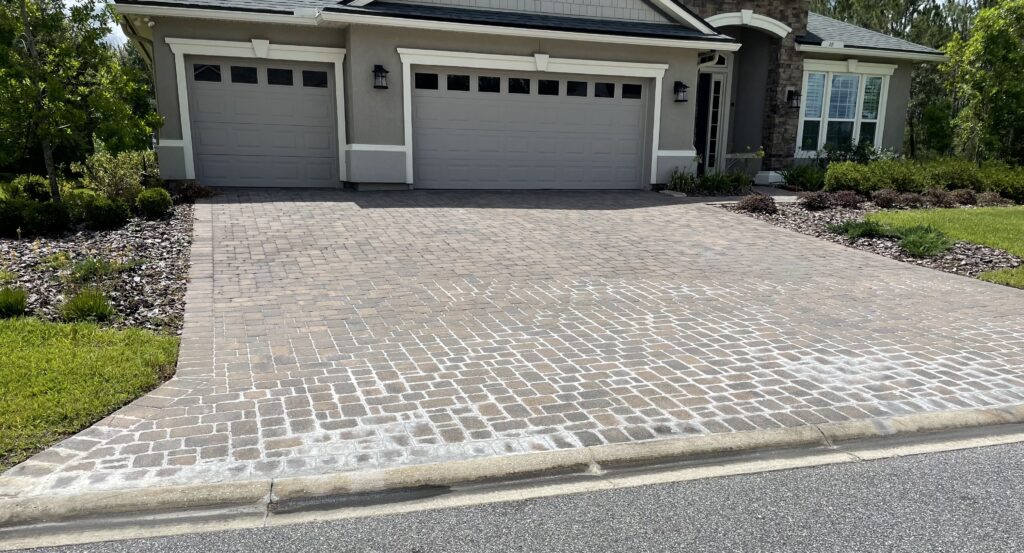
Cause: Calcium buildup often forms when hard water (water high in calcium and magnesium) evaporates, leaving calcium deposits behind. It can also occur from the reaction of carbon dioxide with calcium hydroxide (present in cement) to form calcium carbonate. Environmental factors such as high humidity, rain, and improper drainage contribute to the buildup. The primary composition of calcium carbonate is less soluble in water and harder to remove.
Appearance: It may look like crusty, hardened white deposits, which are way tougher to clean than efflorescence. If your pavers look like any of the images below can be impossible to completely remove.
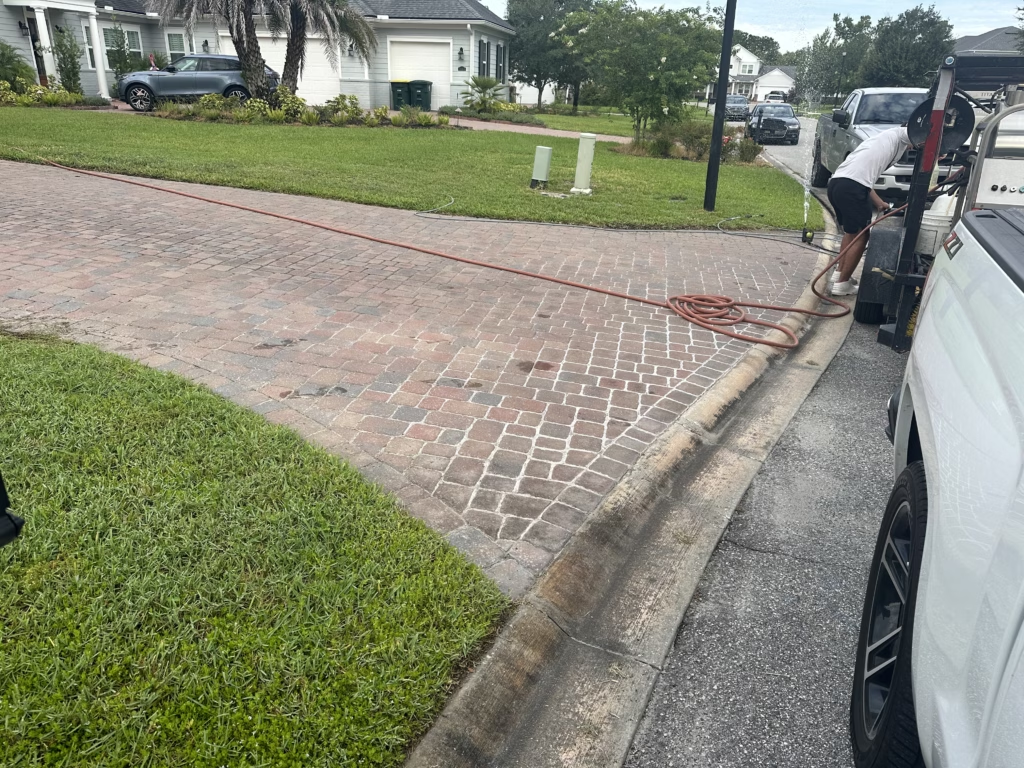
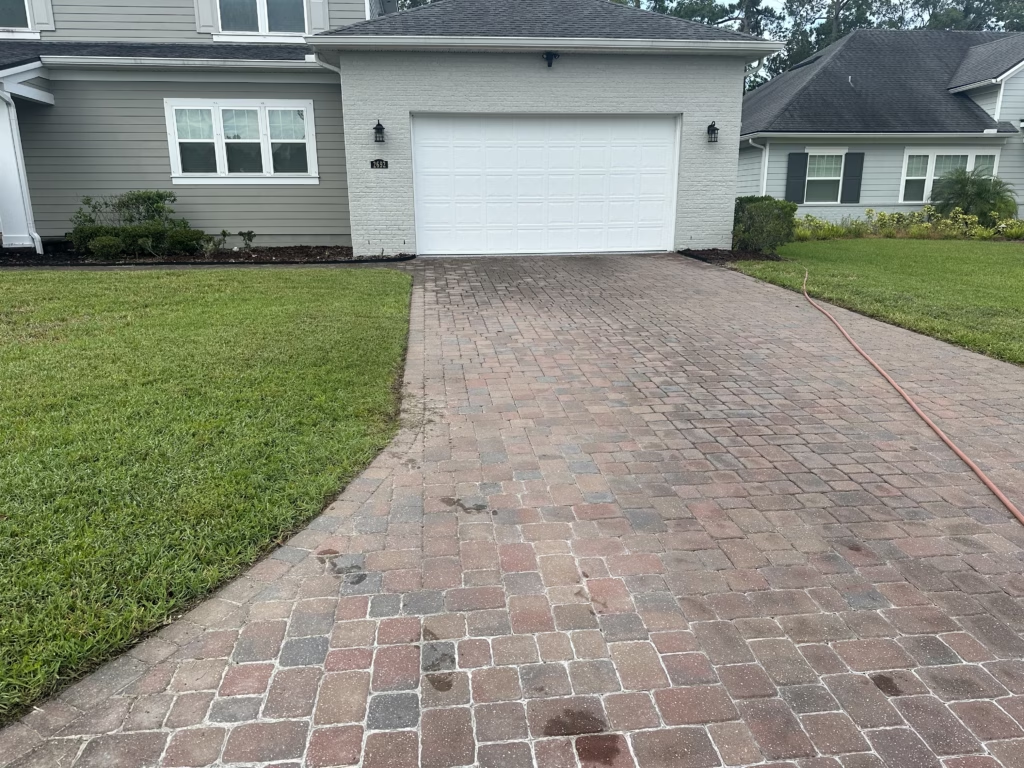
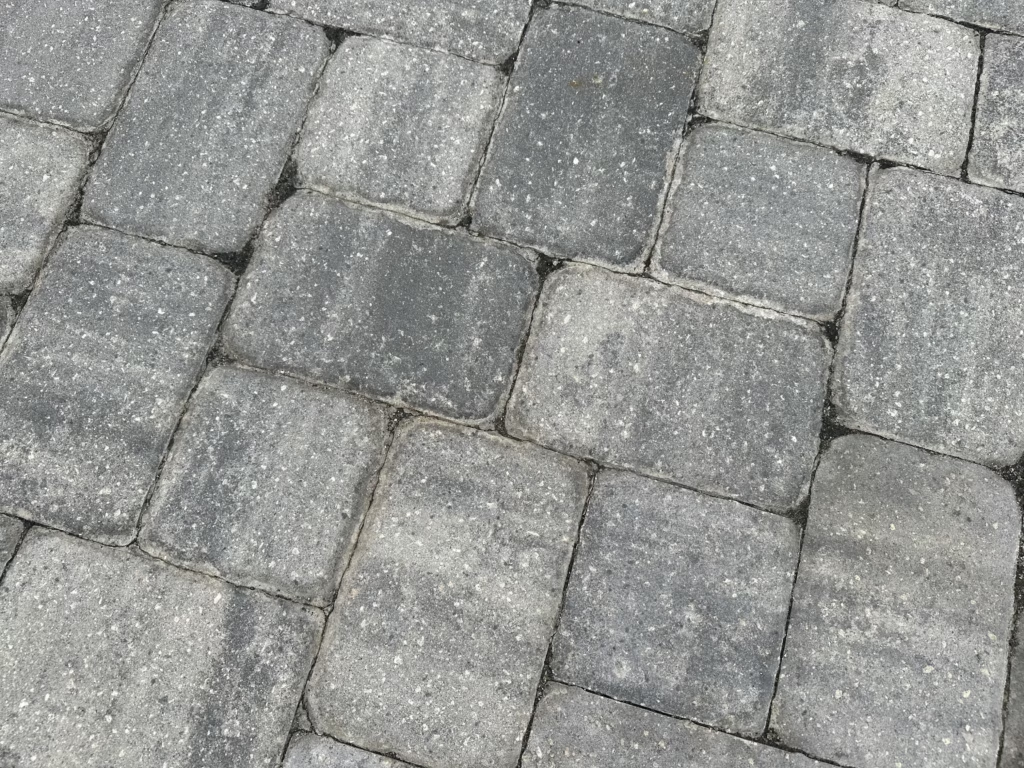
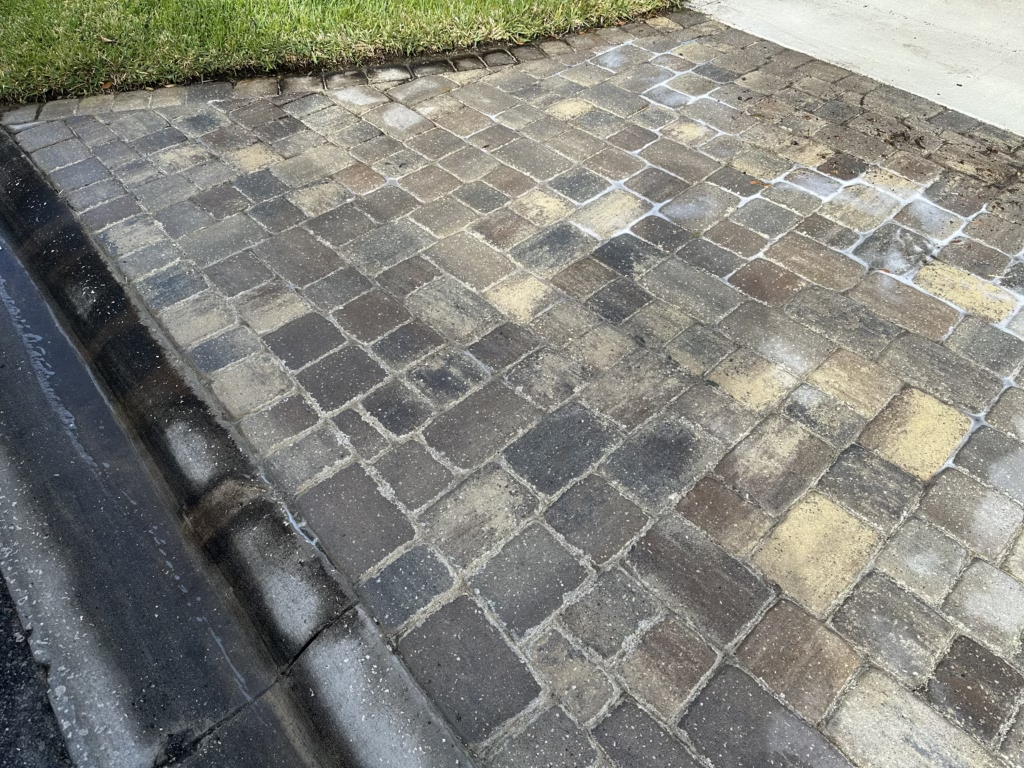
Once the calcium build up gets to this level the only way to remove it is to replace the bad section of pavers. Not the end of the world, but now you will be installing new pavers from a different dye lot next to older pavers. So if you decide to start taking care of your pavers and have them professionally sealed after replacing the calcified pavers they will not uniformly match. Plus new pavers will have a smoother finish if placed directly beside older pavers which are now worn down.
Prevention
Frequently check your irrigation spray heads. Lawn mower wheels and even feet will inevitable make contact at some point or another with your sprayheads. Some of your spray heads will eventually get turned and spray towards an undesirable location like your driveway or exterior siding. Constant spraying of hard water onto any substrate is eventually going to leave behind unsightly calcium deposits.
Proper sealing of the pavers can help minimize moisture infiltration. If you have new pavers I “highly” recommend that you get them professionally sealed 3 months after being installed and not 3 years after being installed.